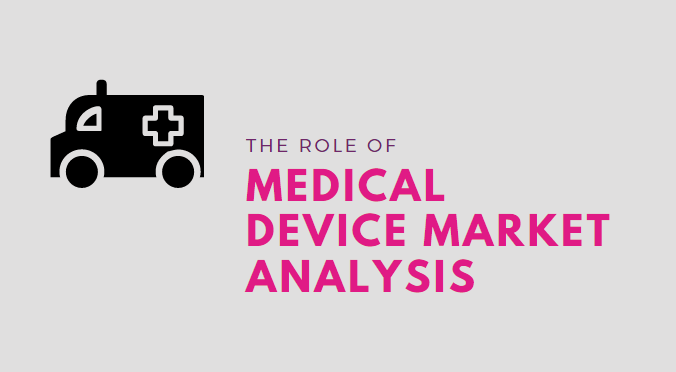Ad Code
Translate
Smart strategies for trading on crypto exchanges
October 20, 2025
Five Do’s For a Healthy Turnover That Bolsters Talent-Retention
October 20, 2025
Discover Honeybee Pharmacy (2025 Guide Important Consumer Tips)
October 14, 2025
What is Ozempic (semaglutide)? (Updated in 2025)
January 30, 2025
Posture Bra: Improving Back Support and Comfort
October 20, 2025
How To Find Suitable Properties In Cyprus?
October 20, 2025
10 Effective Strategies to Improve Domain Authority of Your Website
October 20, 2025
The Role of Medical Device Market Analysis
Khabza Mkhize
April 15, 2020
Continual medical device developments and innovations have played a crucial role in improving diagnosis, treatment and quality of life. With the growing prevalence of chronic conditions, surgical procedures and complexities in procedures, the number of medical technology companies is also increasing. More funds are being diverted to research and development of next-generation medical devices.
The global medical device market is estimated to reach USD 612.70 Billion within the span of the next five years. Now, you have a revolutionary idea that you believe has the potential to be an innovation that can earn a decent share in this market. However, there is a long way to go from the concept to the launch of your device. The lifecycle of a medical device consists of six stages including concept (idea), planning, design, validation, launch and post market.
The estimation of potential commercial success of your idea starts from the very first stage. Identifying the target markets for the device is an important step that identifies potential opportunities in the market. The biggest opportunity for growth comes from hospitals and individual users. They need to purchase new devices or replace existing ones. This is the market you are going to serve. However, first of all, you need to find a medical device consulting expert who can help you with a market analysis which is an important part of commercialization strategy. They do the critical job of confirming:
- Market size
- Projected adoption
- Competitive landscape
- Risks analysis
Investors and other stakeholders want to know about your potential competitive positioning and differentiation in the market you are targeting. Before they invest funds in your innovation, they need concrete data about the target market, existing competition, market trends and expected demand and growth. They find your idea valuable only when you are able to statistically demonstrate the positive results and success the device can achieve. The idea might sound great on the paper, but there are some reasons that make the stakeholders doubt the market potential of the device. Some of these reasons include:
- The significance of the customer base
- Affordability of customers
- Feasibility of the product
A thorough market analysis can help your promising innovation in luring investors and other key stakeholders. The following are the key elements assessed in market analysis for a business plan.
- Total market size assessment
- Identification of target market
- Competitive landscape
- Barriers to entry
Total Market Size Assessment
The medical device consulting expert estimates the total size of the market. The total market size is estimated on the basis of the servable market. Influences like geography, product type or customer segment are also to be considered. The market value of the device is determined both in terms of value and volume. The analyst determines value and volume using research reports and publicly available data. Medical device consultancy firms have access to extensive and up-to-date free and paid reports that help in the most accurate market size evaluation. The market size is defined in terms of disease incidence, prevalence, or procedure volume. The total market size assessment provides investors with a fair idea of potential commercial success.
Identification Of Target Market
In this step, the analyst determines the type of clinical settings or individual users that would be seeking out the device. For instance, if you are developing a next-generation orthopedic device, your target market could be hospitals and healthcare professionals working on the prevention and treatment of musculoskeletal system injuries. Identification of the target market helps in identifying demand and revenue drivers.
Competitive Landscape
Your idea is least likely to be completely new in the market. There are established competitors giving direct competition to your device. It is important to thoroughly study the competitive landscape to estimate:
- Level of competition
- Size of your competitors
- Capabilities of your competitors
You need to extensively study the competitive landscape to identify the advantages and limitations of your competitors.
Identification Of Barriers To Entry
Evaluating the feasibility of the idea is the final step of medical device market analysis. You should be able to exhibit imitable competitive advantage. The following can be barriers to entry and threats to market adoption:
- Technological barriers
- Financial barriers
- Regulatory barriers
- Market access barrier
- Marketing barriers
Featured Post
DL Mining Launches Ethereum Contract Participation Service, Helping Users Earn $2K Stable Daily Returns
Zizo Gala-Mkhize-
October 20, 2025
Soapie Teasers
Sister Sites
Most Popular
List of 6,000+ Dofollow Commentluv Blogs FREE (Updated 2025)
January 16, 2025
Five Do’s For a Healthy Turnover That Bolsters Talent-Retention
October 20, 2025
How To Choose The Right Place For A Winter Campsite
March 06, 2023
Popular posts
List of 6,000+ Dofollow Commentluv Blogs FREE (Updated 2025)
January 16, 2025
Five Do’s For a Healthy Turnover That Bolsters Talent-Retention
October 20, 2025
Discover Honeybee Pharmacy (2025 Guide Important Consumer Tips)
October 14, 2025
Footer Menu Widget
Created By Blogspot Theme | Distributed By Gooyaabi Templates


Social Plugin